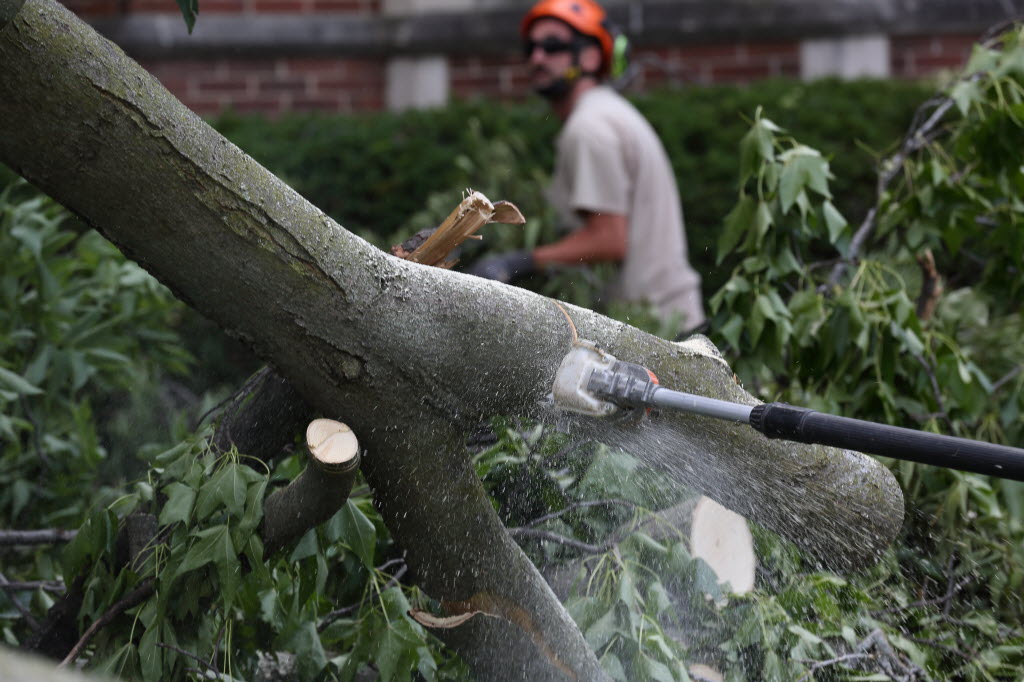When Disaster Strikes: How Homeowners Are Facing Extreme Weather
Learn more about how homeowners are preparing for disasters, tips from pros on how to best protect yourself from storms, and how homeowners are managing in different states.


The weather is getting more extreme, and it's hitting closer to home than ever before. More and more people are seeing the direct impact of floods, fires, hurricanes, and tornadoes on their communities. In fact, Angi’s recent survey found that 60% of homeowners are more worried about extreme weather, 65% know someone whose home has been impacted, and 37% say their own home has been affected. Read on to learn more about how homeowners are preparing for disasters, tips from pros on how to best protect yourself from storms, and how homeowners are managing in different states.
An Ounce of Prevention…
It seems homeowners are caught in a classic case of action versus regret. 74% have already invested in some form of disaster prevention, from reinforcing roofs to installing generators. However, even with these efforts, 52% still regret not doing more, or not doing it sooner. This feeling of regret becomes even more intense for those who have personally experienced damage, with the number jumping to 71%.
So, what is the number one project homeowners wish they had done? It’s a common refrain: nearly 25% regret not installing a backup generator. With power grids feeling the strain of extreme weather events, it’s not surprising that homeowners want to take control of their electricity supply. The appeal of a backup generator is clear, as it offers peace of mind and protection from the inconvenience and potential dangers of a power outage.
When Disaster Strikes: Pro Tips and Common Mistakes
Professional contractors are on the front lines, helping homeowners pick up the pieces after a disaster. Over 80% of pros have worked on disaster-related projects, with flood damage, hurricanes, and tornadoes being the most common culprits.
What are the top projects homeowners should be thinking about before disaster hits? According to the pros, the most in-demand preventative projects are:
Tree removal and trimming (59%)
Installing backup generators (50%)
Flood-proofing measures (48%)
While acting fast after a disaster is crucial, homeowners can often make things worse by making common mistakes. According to contractors, the three biggest errors are:
Trying to do the repairs themselves (52%): While the DIY instinct is strong, professionals have the tools and expertise to handle complex damage and identify hidden issues.
Not understanding their insurance policy (43%): Navigating the claims process can be a nightmare without a clear understanding of your coverage.
Overlooking hidden damage (43%): What looks like a simple water stain could be a sign of a much larger structural issue.
A Look at the Front Lines: State-by-State Insights
Extreme weather impacts us all, but the specific challenges vary greatly by location. Here's a look at how homeowners in different states are responding:
Florida: Unsurprisingly, Florida leads the way with 83% of homeowners investing in disaster protection. Their focus is on high-impact solutions, with 47% installing impact-resistant windows and storm shutters, 53% focusing on tree trimming, and 31% reinforcing their roofs.
New York: Homeowners here have the most regrets, with 63% wishing they had done a project sooner. The top regrets are not installing a backup generator (27%) and not reinforcing their roof with high-wind-rated materials (26%).
Texas: With a high rate of investment (81%), Texans are also deeply familiar with extreme weather. 80% know someone whose home has been impacted, and over 50% have personally experienced damage. Their primary focus for preventative projects is on tree removal and trimming (58%).
California: In a state known for wildfires, 25% of homeowners have invested in fire-resistant materials, though 20% regret not doing this sooner. Tree removal and trimming (47%) is also a leading preventative project.
Illinois: This state has seen nearly 80% of homeowners invest in disaster protection, with 47% focusing on tree trimming and 35% focusing on flood-proofing measures.
Extreme weather is no longer a rare event. It’s a reality that's changing how we think about our homes and our safety. The best time to prepare for a disaster isn't when the storm is on its way, but long before it ever appears on the horizon. And for some, the impact is significant enough that 22% of homeowners have even considered moving because their current home isn’t protected.
